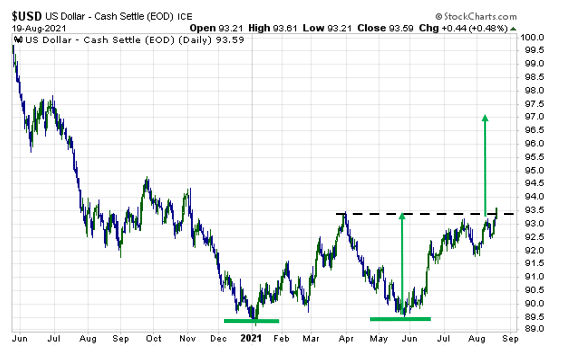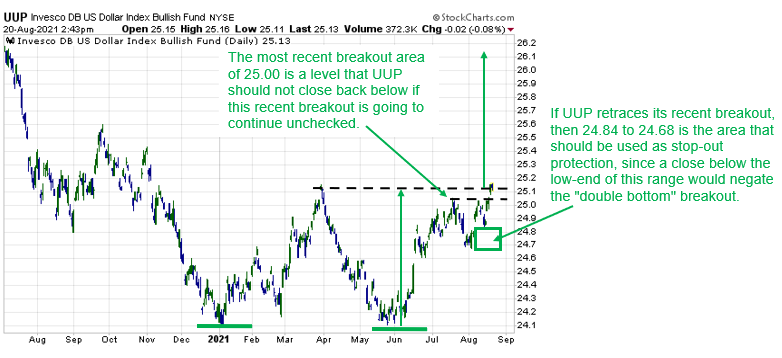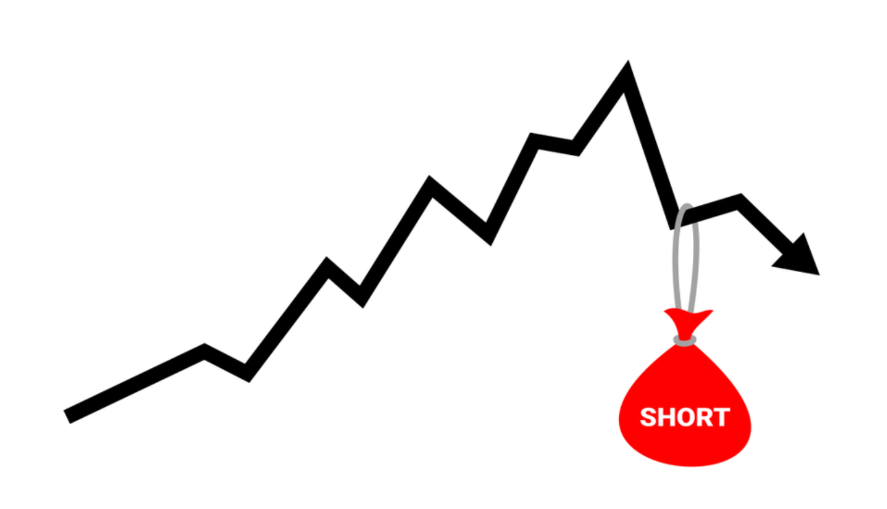When the equity market becomes uncharacteristically turbulent like it did this past week, it usually means that bullish trading opportunities are probably happening in markets outside of equities.
Luckily, in 2021 there’s no corner of the financial markets that’s off limits to retail traders.
Today, I am going to show you how I approach trading when a major bottom breakout that is occurring in what is perhaps the most important asset in the world.
The US dollar is just starting to rally out of a major bottom
Back in the late days of June, I highlighted the US dollar as it was, at the time, showing “bull flag” characteristics.
At the time, though, I questioned the dollar’s ability to live up to the bullish implications that this “flag” pattern was projecting, due to the lack of a squeezable bearish sentiment extreme at the time.
As Figure 1 below reveals, that skepticism proved to be partially correct, as the dollar index staged a weak rally that fell well shy of reaching measured post-pattern potential to the 94.40 area.
Figure 1

As Figure 2 shows, however, while the dollar did not show the explosive upside that the late-June “flag” was implying, it has since remained buoyant, and is now surging above an 8-month “double bottom” basing pattern.
Figure 2

Why is the US dollar so important to keep track of?
Because of the dollar’s status as the world’s reserve currency, it’s movement can impact a great many markets.
If you think the dollar’s movements don’t have the potential to affect your portfolio, you’re probably mistaken.
Dollar strength that is sustainable and long-lasting usually causes commodity prices to decline, large multinational stocks to underperform, and emerging market stocks to come under pressure.
Because of this, the dollar is the single most important instrument that traders should always have an eye on.
Again, the key here is that the dollar’s strength has to be pronounced and sustainable for these other markets to come under pressure.
Based on the “double bottom” breakout that occurred this past week (see Figure 2), there is now theoretical evidence to suggest that this is what the future may have in store.
Let’s take a closer look at what I mean.
The US dollar is easily tradable through the Invesco DB US Dollar Index Bullish Fund (UUP)
As I alluded to in my opening comments, just about every financial market segment can be traded these days, usually through ETFs.
If you want to participate in the sizable upside swing potential that the dollar’s recent bottom breakout is now offering, the most popular vehicle for trading the dollar is the Invesco DB US Dollar Index Bullish Fund (UUP).
Like many liquid ETFs, you can trade options on UUP, as well.
So how should we go about trading this breakout?
First of all, the “double bottom” target of 97 on the chart of the US Dollar Index shown above equates to a target of 26.15 for the Invesco DB US Dollar Index Bullish Fund (UUP).
The problem with pattern breakouts is that sometimes there can be a pause or retest period after the breakout, which can produce volatile, confusing price action.
At the same time, though, there is also a tendency for price to not look back and just keep going after a breakout.
As traders, it’s important to respect both of these possible scenarios so that we can size accordingly and pick the right stops.
So, if a trader wants to be more aggressive, betting that the recent momentum will continue to carry forward unchecked by buying shorter-dated calls, then UUP’s 25.00 level should be used as the first stop.
On the other hand, if a trader wants to play the bigger picture, allowing for the possibility that the dollar may pause and retrace a bit after the recent breakout, then the 24.84 to 24.68 is seen as the stop-out zone.
Figure 3








1 Comments
Interesting didn’t know one could invest in the dollar.I should try it. Thanks so much.